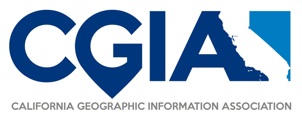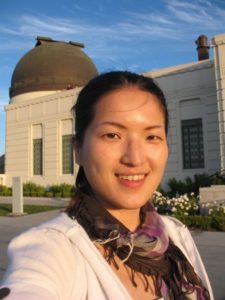Job:
Lecturer of Spatial Sciences, University of Southern California (USC), Los Angeles, California
Bio:Â An-Min Wu teaches GIS courses in the online Geographic Information Science and Technology graduate program and in the interdisciplinary Population, Health and Place PhD program at USC. Her area of expertise is in geospatial analysis and modeling. As she learns more and more about open source GIS and data science, she hopes to incorporate Big Data technologies to solve GIScience problems, particularly about human impacts on the natural environment in various spatial and temporal scales.
An-Min has worked as a GIS analyst, mapping engineer, and mapping project manager (Penn State University, 2004-2005; Magellan Navigation 2005-2008). She enjoys doing fieldwork and making meaningful maps to communicate important environmental issues to people. As her research interests lie in the area of changes in natural environment under human influences using quantitative analyses and geospatial technologies, she works closely on the issues of soil erosion, carbon storage and processes on agricultural landscapes, forests and wetlands in the United States. Her career goal is to use GIS to help making our living environment sustainable.
An-Min received PhD in Land and Atmospheric Science with a minor in Geographic Information Science at University of Minnesota, and the concurrent Master’s degrees in Soil Science and Environmental Pollution Control at The Pennsylvania State University.
Project(s): In her Ph.D. dissertation research, An-Min examined the effect of agricultural erosion and deposition to soil organic carbon in depressional landscapes of Minnesota. With GIS technologies and associated software/languages such as ArcGIS, SAGA-GIS, Python, and R, she developed upslope terrain attributes to better predict the spatial redistribution of soil mass and soil organic carbon under this human disturbance.
Her favorite project to-date is her master’s thesis research in land suitability modeling for winegrape vineyards, the ‘terroir’, in Pennsylvania. She worked with farmers and grape experts to build the Pennsylvania Site Assessment System (PASAS) that employed 13 critical climate parameters, soil properties, and topographic characteristics for specific sites throughout nine Pennsylvania Counties. The PASAS model was then built into a web mapping application for current and potential farmers in assessing site quality for winegrape growing. The database development and spatial statistics skills as well as collaboration experience she learned from the project are invaluable to her personal life and GIS career.
Before teaching at USC, An-Min worked as a postdoctoral associate with US Forest Service Northern Research Station and University of Minnesota to detect changes in soil carbon density in US forests. She identified soil organic carbon variability and determined the minimum detectable changes in soil organic carbon for main forest type groups under the current sampling scheme, and provided suggestions for future soil sampling protocols in US Forest Services’ Forest Analysis and Inventory National Program.
Her recent new course in the Population, Health, and Place program allows her to explore current GIS research on public health. In turn, she also plans to integrate GIS with environmental health data to understand spatial correlations between human health and our living environment. She is currently investigating spatial distributions of soil lead from residential households and is looking into the link between soil lead and children’s blood lead level.
Anything about yourself? An-Min enjoys meeting new people, travelling, practicing karate, and doing outdoor activities including hiking, rock climbing and scuba diving. Most of these activities, however, are currently in place of playing with her 2-year-old. You can find An-Min on her social media accounts including LinkedIn (https://www.linkedin.com/in/anminwu/) and Twitter (https://twitter.com/anminw).

